

Plant
We have planted at sites throughout Dorset and have grant aided and provided
planting assistance and advice at others. The principal conditions are that we
usually plant native trees and that they are accessible or visible to the public.
A guiding principal for our tree planting is for the right tree in the right place.
The level of involvement can vary. Members are welcomed to volunteer and get
hands on planting experience. Planting occurs in the winter months usually at 2 or
3 sites and are a wonderful opportunity for the whole family to do creative
conservation. In summer work parties maintain the planted sites and clear weeds,
brambles and if necessary remove supports and protection.
Planting at Milborne Woods where children from the “My Life, My Tree” project at Milborne School
planted out their trees followed by members planting more trees to fill an open area within the wood.
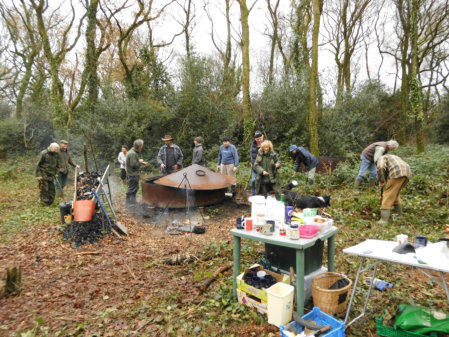

Students from the Hardy School help to plant the Jubilee Wood at Poundbury (Right). For the first
few years this just looked like a plantation of Tuley tubes but after 9 – 10 years trees are over 10 ft
high and shrubs are flowering and producing berries and autumn colour.
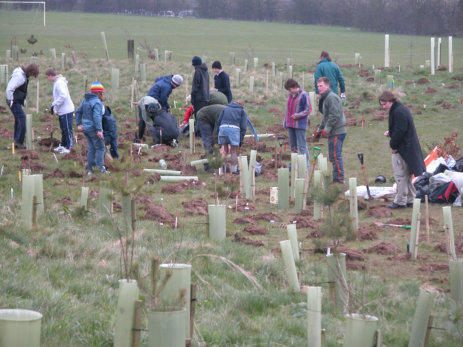



Protect
Tree protection is needed now more than ever before. Large-scale developments
can take place so quickly and often involve the removal of trees – sometimes by
subterfuge. Our network of members brings cases to our attention and tree
officers and planning departments are contacted.
Sometimes the solution is simple, such as a horse proof fence round a lime tree
to prevent ring barking. Sometimes it is much more complex when we may have
to put our case at a planning inquiry. Tree Preservation Orders can protect trees
and we support tree officers in placing new ones and following up infringements.
We can be eyes on the spot.
If trees have to be felled or are lost to disease we would encourage replanting
with appropriate replacements.
We are also prepared to enter into national debates over policies for trees.

This area of a rural lane bordered by
trees would have been destroyed by
the cable corridor from the Navitas
Bay wind farm in Poole Bay. This
scheme proposed a cable corridor 30
km long and 30 m wide that would
have resulted in a huge number of
trees being lost, almost half mature
oaks. Naturally we objected to such
destruction despite being in favour of
renewable energy. Not only do we
want the right trees in the right place
but also the same for energy
schemes.

Protecting trees. Never straightforward!
We get consulted several times each year about whether we can support saving a tree. Often
we are contacted rather late in the day and it can become a rush to make a submission or
decisions have already been taken. Sometimes it is a new and more complex problem and this
becomes particularly so when other preservation orders are involved.
We were contacted earlier this year about an old (about 100 years) ginkgo in Chideock. In this
case one of the two trunks of this tree was leaning on a wall that was joined to a listed building
and therefore also benefited from the listed status. Ginkgo is of course an introduced tree
(though it is threatened in its homeland) but this was a particularly old and large example. The
tree was slightly displacing the capping stones of the wall. When the tree and the wall were
examined it was clear that the upper layer of the “important and unique three tiered wall” was
in fact a more recent modern brick layer that was being damaged but because it was joined to
grade 2 listed building benefitted from its protected status. We wrote to the tree officer and
listed building officer pointing out among other things that the damaged wall was in reality
modern and the tree a “Jurassic living fossil” was particularly interesting for its proximity to the
Jurassic Coast.
As a result of representations by local councillors and others as well as Trees for Dorset the
felling application was withdrawn and a proposal to remove the trunk damaging the wall and a
reduction in the crown of the second trunk has been approved and a Tree Preservation Order
has been put on it. The tree has now had the necessary management and continues to flourish
and can be seen as you enter Chideock travelling from Bridport on the A35 just after the
bridge.



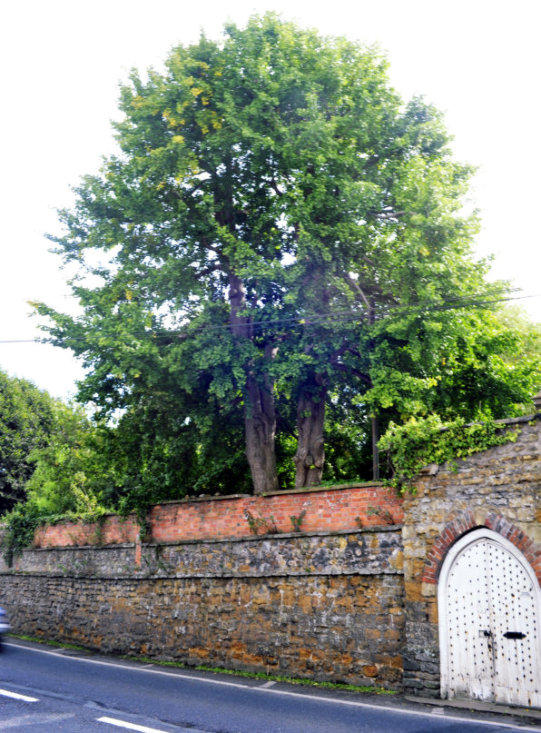
Promote
We promote trees by arranging for speakers to give talks on trees and their links to other parts of
the natural world to members and members of the general public. We can provide speakers to
talk about trees to other groups.
In the summer we organise visits to places of interest for their trees or to follow up winter talks,
these range from National Trust properties and gardens to the New Forest. Recent visits have
been to Hilliers Gardens and the New Forest.

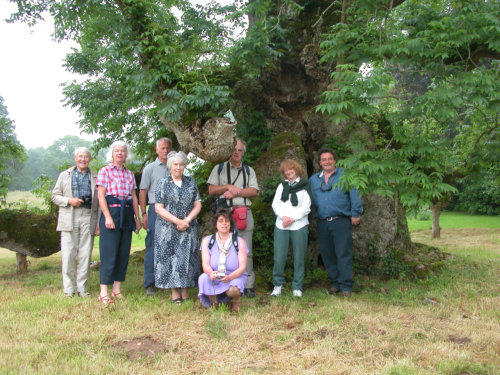
Members on a tour of Ancient Trees of Dorset and neighbouring counties visit, on the left, the Silton Oak
in North Dorset and, on the right,the Clapton Ash just into Somerset.
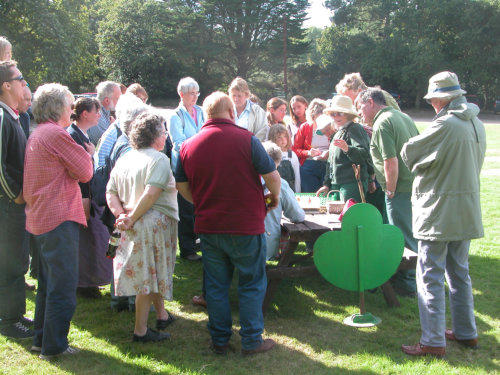
Members and members of the public gather at the start of an autumn fungus foray to hear about how
to identify fungi and which to beware of.























